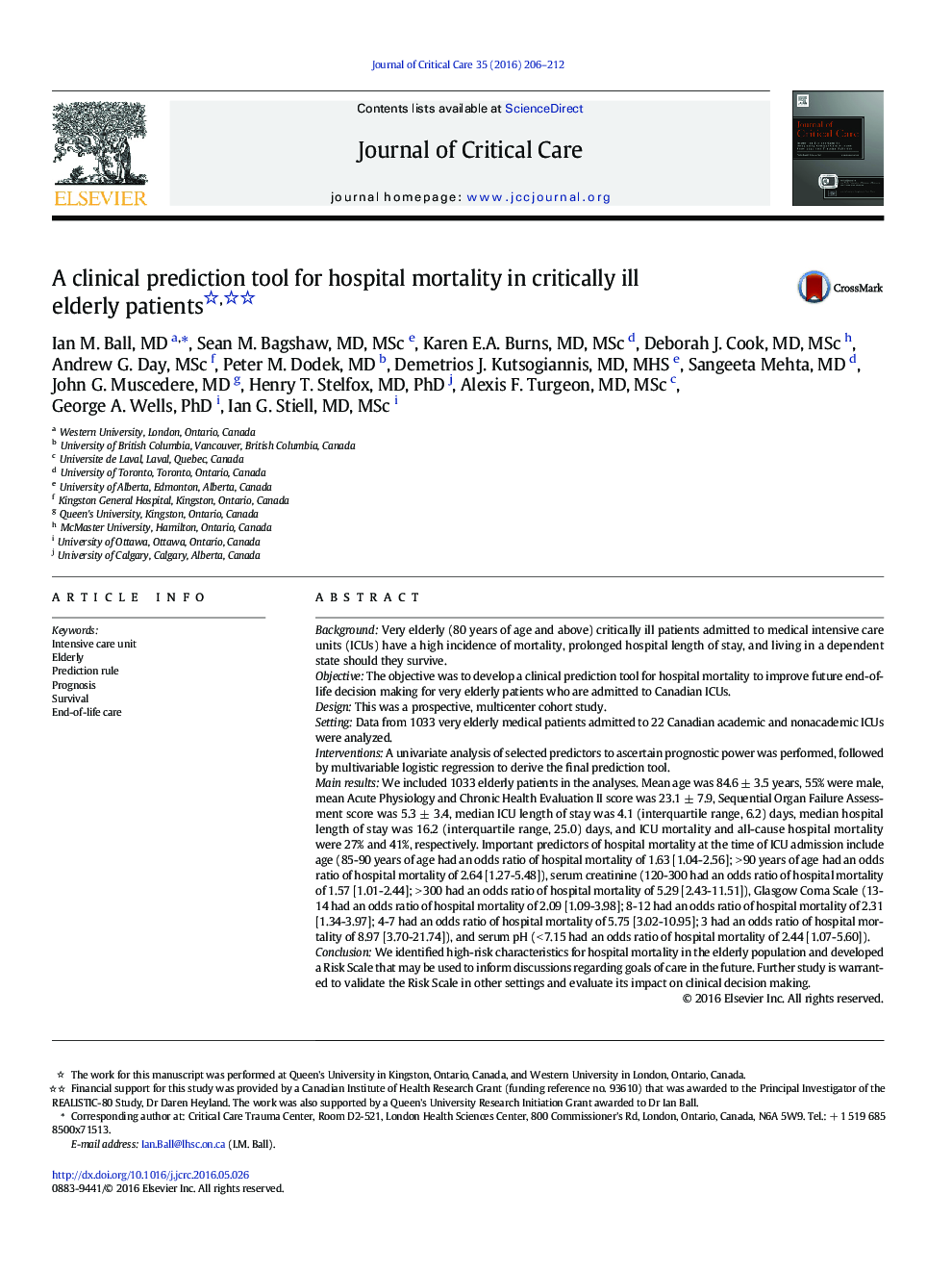| کد مقاله | کد نشریه | سال انتشار | مقاله انگلیسی | نسخه تمام متن |
|---|---|---|---|---|
| 2764431 | 1567677 | 2016 | 7 صفحه PDF | دانلود رایگان |
BackgroundVery elderly (80 years of age and above) critically ill patients admitted to medical intensive care units (ICUs) have a high incidence of mortality, prolonged hospital length of stay, and living in a dependent state should they survive.ObjectiveThe objective was to develop a clinical prediction tool for hospital mortality to improve future end-of-life decision making for very elderly patients who are admitted to Canadian ICUs.DesignThis was a prospective, multicenter cohort study.SettingData from 1033 very elderly medical patients admitted to 22 Canadian academic and nonacademic ICUs were analyzed.InterventionsA univariate analysis of selected predictors to ascertain prognostic power was performed, followed by multivariable logistic regression to derive the final prediction tool.Main resultsWe included 1033 elderly patients in the analyses. Mean age was 84.6 ± 3.5 years, 55% were male, mean Acute Physiology and Chronic Health Evaluation II score was 23.1 ± 7.9, Sequential Organ Failure Assessment score was 5.3 ± 3.4, median ICU length of stay was 4.1 (interquartile range, 6.2) days, median hospital length of stay was 16.2 (interquartile range, 25.0) days, and ICU mortality and all-cause hospital mortality were 27% and 41%, respectively. Important predictors of hospital mortality at the time of ICU admission include age (85-90 years of age had an odds ratio of hospital mortality of 1.63 [1.04-2.56]; > 90 years of age had an odds ratio of hospital mortality of 2.64 [1.27-5.48]), serum creatinine (120-300 had an odds ratio of hospital mortality of 1.57 [1.01-2.44]; > 300 had an odds ratio of hospital mortality of 5.29 [2.43-11.51]), Glasgow Coma Scale (13-14 had an odds ratio of hospital mortality of 2.09 [1.09-3.98]; 8-12 had an odds ratio of hospital mortality of 2.31 [1.34-3.97]; 4-7 had an odds ratio of hospital mortality of 5.75 [3.02-10.95]; 3 had an odds ratio of hospital mortality of 8.97 [3.70-21.74]), and serum pH (< 7.15 had an odds ratio of hospital mortality of 2.44 [1.07-5.60]).ConclusionWe identified high-risk characteristics for hospital mortality in the elderly population and developed a Risk Scale that may be used to inform discussions regarding goals of care in the future. Further study is warranted to validate the Risk Scale in other settings and evaluate its impact on clinical decision making.
Figure optionsDownload high-quality image (57 K)Download as PowerPoint slide
Journal: Journal of Critical Care - Volume 35, October 2016, Pages 206–212
